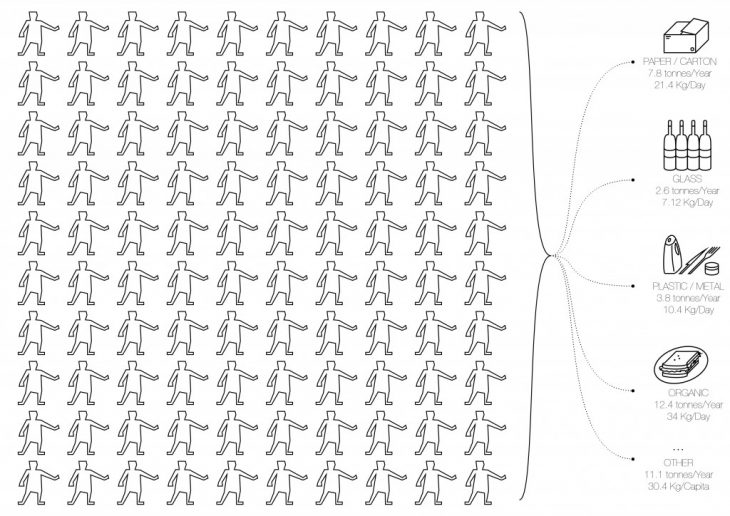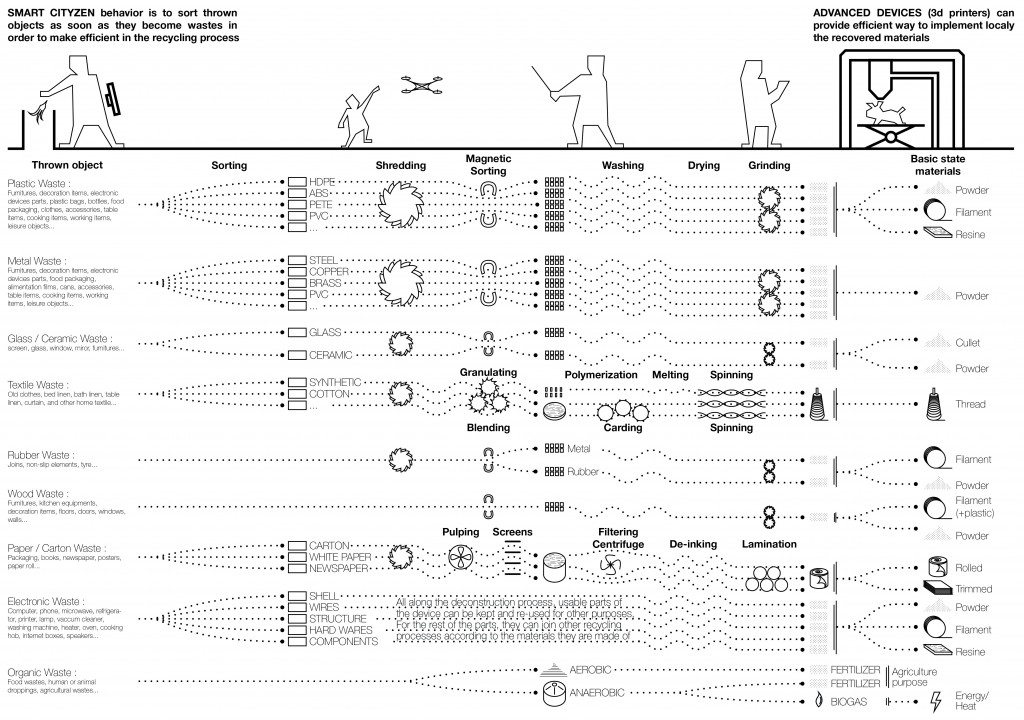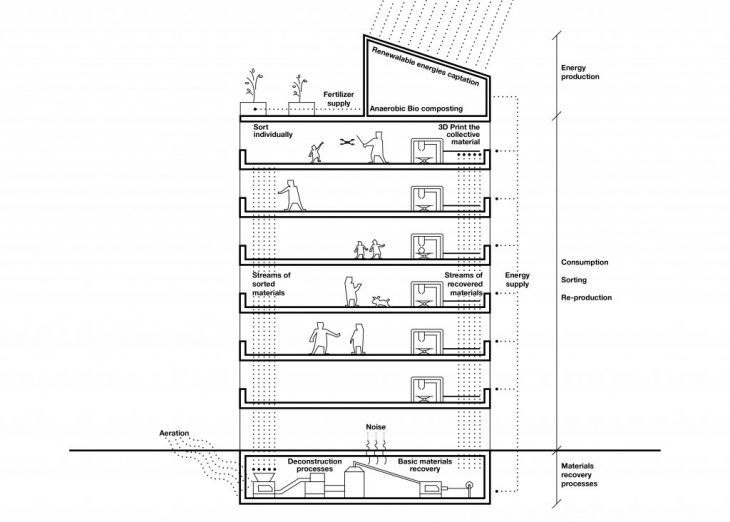- Project of Sylvain Totaro Iaac - MaCT 2016 Faculty: Vicente Guallart, Eulalia Moran -
The proposal is to make an housing building, hosting 100 persons, which would be able to provide for inhabitants the possibility to recover the potential contained within their waste. This project aims to empowerize cityzens by making them real actors in the production of objects of their needs.
In order to make a recycling process as much efficient as possible each material has to be well sorted. Indeed, as we already mentioned, materials owns specific physical or chemical features which means that they cannot be treated by the same process. For this reason, the first step requires the action of users in the way that they have to sort precisely their wasted objects and to separate different materials form each other when it is needed. This action could be done mechanically but it would call for much more various sorting machines, so much more energy and much more space to fit those machines in addition to the material recovry machines. It is also a matter of making people aware of what is surrounding them, from what objects they use in their daily life are made of.
The project aims also to break the gap between customers, recycling processes and material recovery. Inhabitants of cities should not only be passive customers but should be involved in the production of the items they desire or they need, and also in the management of what they produce as obsolet objects. An other important point is to make people aware of the richness contained in their used objects. Indeed, a good sorting requires knowledges about materials and manufactured objects.
Thus, in order to provide a better understanding of materials and recycling processes, more comunication and informations will be supplyed.
Once materials are sorted, they can be sent to the treatment machines, in order to be reduced in basic state materials. Within recycling traditional plants, human intervention is mostly only needed for the sorting step. Since the proposed process involves the customers for this previous step, human intervention is not mandatory for the rest of the operation. Being totally mechanical, those processes don’t have special requirements a part a good aeration, an easy access for maintenance and a thick insulation against noise transmissions. With only one slab in comun with the hall entrance of the projected housing building, the basement seems a suitable place for fitting the material recovery processes. Moreover, the project plans to be located in an urban area, where the needs of density tend to develop a vertical organisation of living units. Thus, we could imagine a collective pipes network contained within the full parts of the building, enabling materials to be transferred dirrectly from the living areas (in the upper parts of the building) to the materials recovering area (in the basement) by gravity action.
Lessons of the past showed that using vertical pipes for the transfer of organic wastes wasn’t sanitary available. Moreover, the possibility of implementing a urban farm area on the top of the building argued for disposing an anaerobic bio composting system which is compiling organics wastes of inhabitants in order to produce fertilizer for vegetables and biogas to produce energy supply for the whole building. The tool shelter to look after the urban garden, which is also used to host the composting system, could support a solar panel system in order to make the upper part of the building energy productive.
After being sorted and reduced, materials will be converted into usable mono material elements capable to be implemented by advanced devices like 3D printers belonged by inhabitants themselves. Those basic state material can be filament, powder, resine, rolled sheet, trimmed sheet, thread… The collectivity can dirrectly take advantage of those free access materials as a reward of their contribution. By combining recovered materials and advanced technology devices, inhabitants can produce all the objects they need. They can develop their own design, with their own materials, to get the most suitable objects in order to satisfy their necessity. Then, comunity of makers can share their personal design and on going project to a worldwide benefit.

–

–

</p>
